
Pininfarina Announces All-Electric SUV And Sedan With 600km Range
- Aug 6, 2019
- Views : 16382

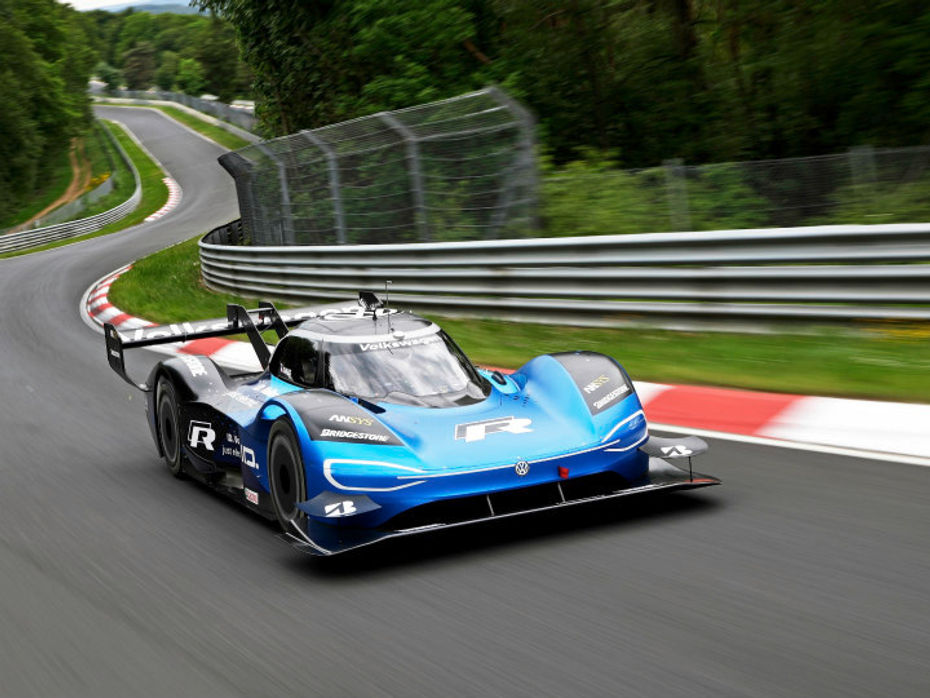
Volkswagen added another feather to the ID.R’s cap when it obliterated the electric vehicle Nurburgring lap record on 3 June 2019. The purpose built race car took just 6:05.336 to lap the ring, which was a whopping 40 seconds faster than the previous record set by the Nio EP9 in 2017. This lap also propelled the Volkswagen ID.R to second on the all-time rankings, behind the Porsche 919 Evo which set a lap time of 5:19.55 in 2018. Fast forward to today, VW has revealed an interesting data analysis of what transpired in the Nurburgring record run.
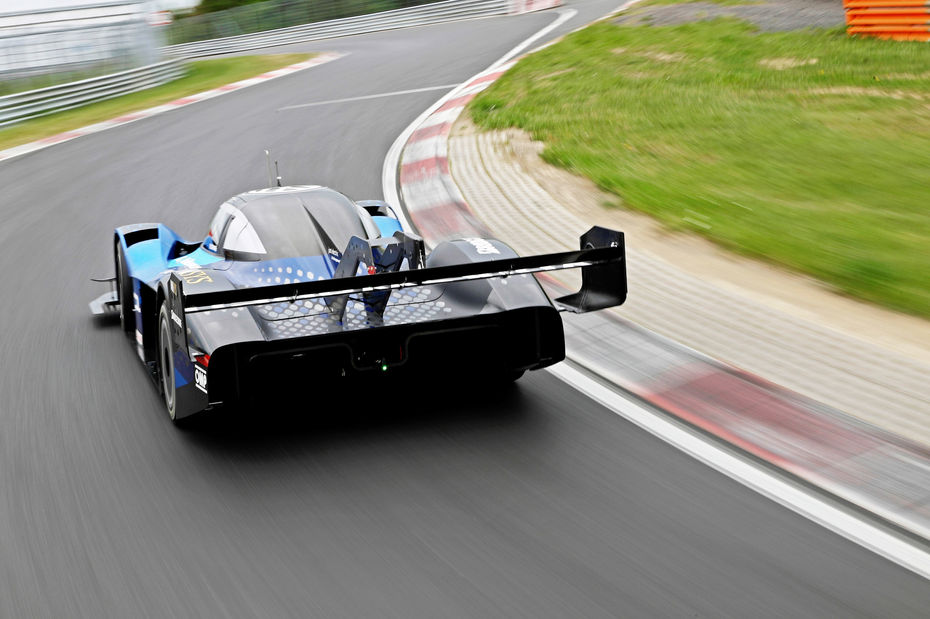
The ID.R did not only smash the electric record, it did so by being the most efficient car to lap the ‘Ring’. The ID.R only used 24.7 kWh of energy around the lap at an average speed of 204.96kmph. To put it into perspective, that’s the amount of energy a 1.5 ton air conditioner consumes in a continuous 16 hour period. VW further revealed that 9.2 percent of the ID R's energy actually came from the regenerative braking system alone.
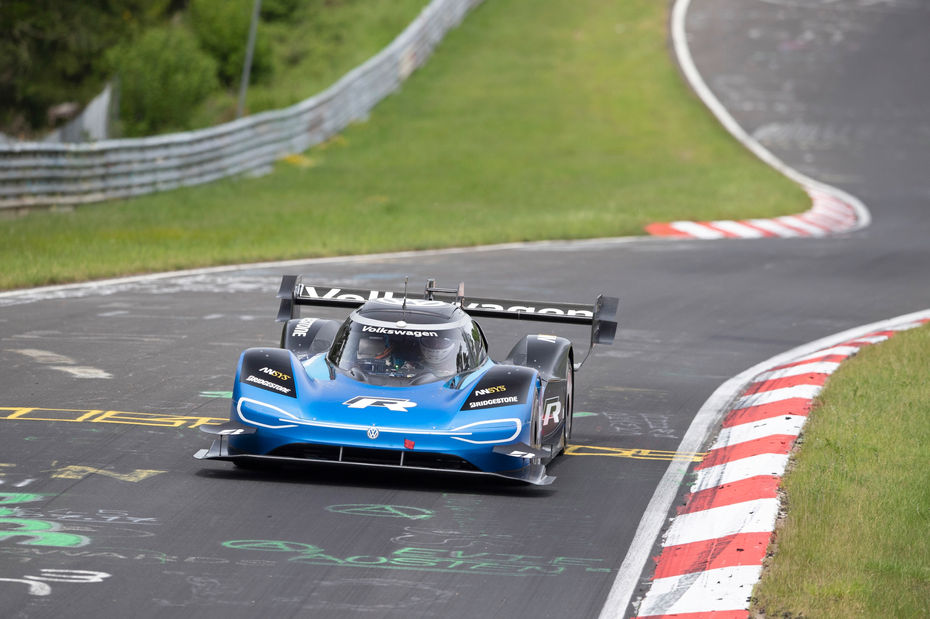
To make the car go faster on the straights, the ID.R used a Formula One car-like DRS (Drag Reduction System). It adjusts the wing when activated to produce the most downforce possible and reduces aerodynamic drag. Driver Romain Dumas had 23 uses of the Drag Reduction System (DRS) rear wing in the entirety of the lap for better straight line speed. He was subjected to an average of 3Gs of force around the lap with a highest load of 3.49G. This is a representation of the sheer breakneck cornering forces the ID.R produced in the twists and bends of the Nurburgring racetrack. Compared to the iteration of the car used to set the Pikes Peak record, this one included a low-drag aero philosophy, mainly with a smaller rear wing, revisions to the floor, splitters and battery management tweaks.
Also Read:
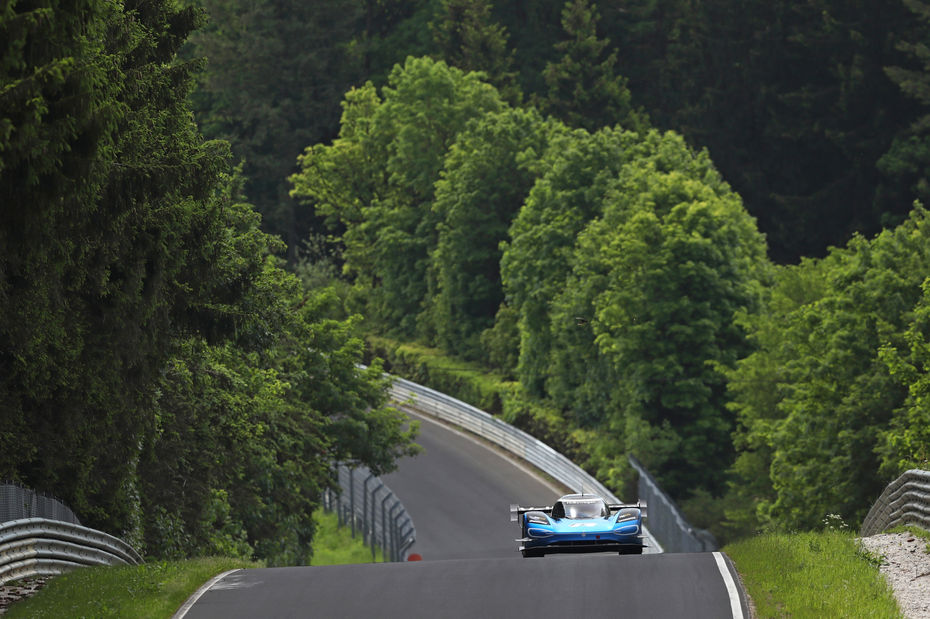
To power the battery packs, the EV used a standard generator. However, it wasn't powered by decaying dinosaurs, rather by sugar alcohol known as glycerin. This generation powered the batteries, which then power the ID.R’s twin electric motors. As a result, the car packs a hefty 680PS of power and has achieved a recorded top speed of 273kmph.
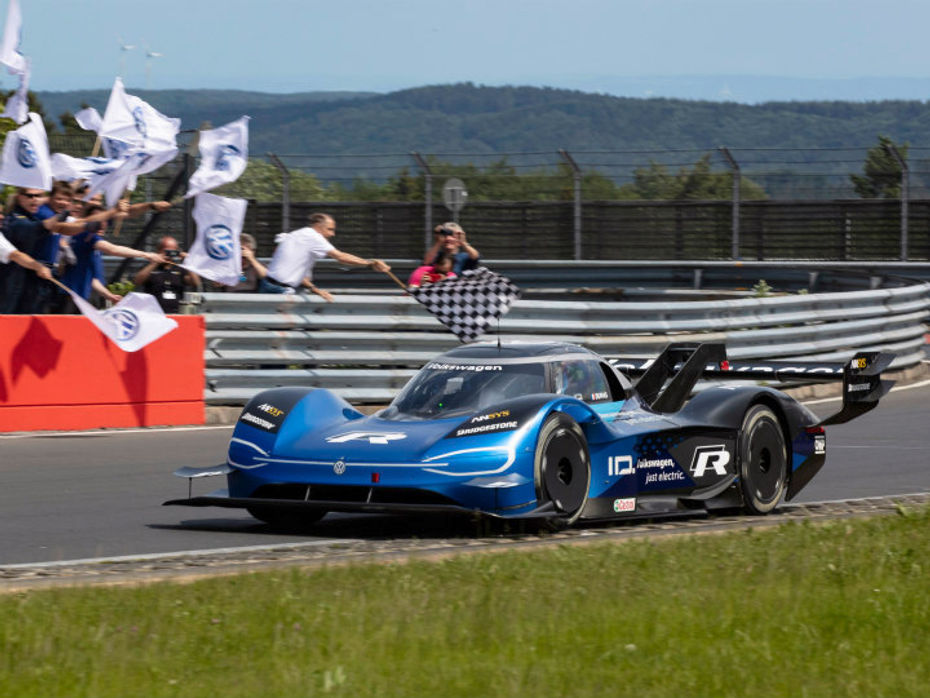
In the end, 2019 has been a fantastic year for EVs especially with the ID.R recently breaking the 20-year Goodwood hillclimb record as well. We can certainly expect to see this mean machine in the headlines in the near future since it is the ambassador for VW's future ID electric car models. The first production model from the family will be the ID 3 hatchback which is set for a reveal later this year.
Also Read:

Pininfarina Announces All-Electric SUV And Sedan With 600km Range

Volkswagen’s Kylaq-equivalent Subcompact SUV Christened...

Mahindra BE 6e and XEV 9e: Unleashing An Electric Revolution

2024 Toyota Camry Launched In India At Rs 48 Lakh; Now...

Skoda Kylaq Breaks Cover With Prices Starting From Rs 7.89 Lakh!

The New Maruti Dzire 2024 Has Been Launched In All Its Glory! Priced...

Mahindra BE 6e Launched At Rs 18.9 Lakh, Gets Modern Styling, Premium...

Skoda Kylaq: Here’s What You Get With Each Of Its 4 Variants

Mahindra’s Top 5 Big Claims About BE 6e & XEV 9e
India's largest automotive community
 Toyota Camry
Rs. 48.00 Lakh
Toyota Camry
Rs. 48.00 Lakh
 Honda Amaze
Rs. 7.99 Lakh
Honda Amaze
Rs. 7.99 Lakh
 Audi Q7
Rs. 88.66 Lakh
Audi Q7
Rs. 88.66 Lakh
 Mahindra XEV 9e
Rs. 21.90 Lakh
Mahindra XEV 9e
Rs. 21.90 Lakh
 Mahindra BE 6
Rs. 18.90 Lakh
Mahindra BE 6
Rs. 18.90 Lakh